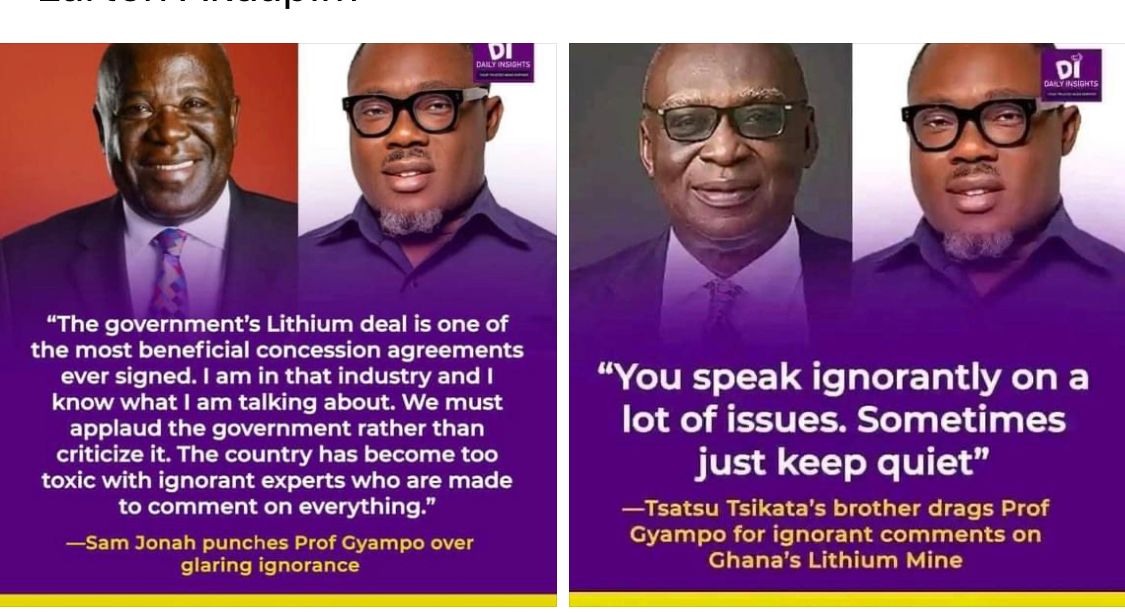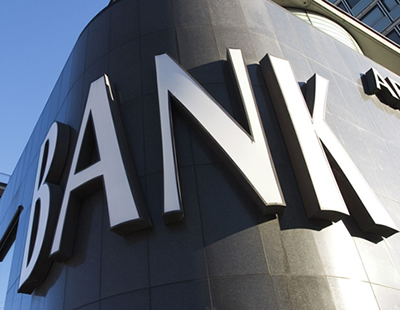![Controversies surrounding the Ewoyaa Lithium Mining Lease: Some comments [Article]](http://news.ghheadlines.com/images/default.png)
Given the state of governance in our country and the long-held conviction that the country has not had enough benefits from mining, it is understandable that there is suspicion about a significant transaction such as the grant of a lithium mining lease to a subsidiary of an Australian-listed mining company whose significant U.S. shareholder will buy half the product of the mine and send it to its U.S. plant for processing.
This is especially so when the first time potentially affected communities and other significant stakeholders learn about the transaction is in a manner which conveys the impression of a fait accompli. The task, however, is to assess the terms of the transaction in clear-headed fashion and determine whether it should be rejected entirely or improved in any particular.
After considering two areas in which we think improvements should be made to the terms of the transaction, we will address three widely-publicised criticisms which are patently wrong, in our view. We will also discuss longer-term measures for improving our knowledge about our lithium and green mineral resources and for developing policy around them.
The first area of improvement relates to the provisions for pricing of its main product, namely, the beneficiated lithium ore, spodumene concentrate. It is the sales price of this that essentially determines the company’s gross revenue. It is on that gross revenue that government royalties and the growth and sustainability levy would be calculated. That would also be the basis for assessing the company’s income tax liability. It is clearly in the interest of Ghana for the company to obtain the highest prices possible for its products. As we understand it, half of the concentrate which will have a lithium oxide content of 6% (so-called SC6) will be sold through an off-take agreement to a US company, Piedmont, which has significant direct and indirect ownership interest in the Ewoyaa project. The other half, having lithium oxide content of 5.5%, will be sold to others. The agreement must require that prices obtained by the company are in line with market prices, and especially in the case of the sale to Piedmont, that prices are at arm’s length. Surely the government must insist on seeing the provisions of the off-take agreements. The lithium market is very dynamic and in the last few months and weeks has been very volatile. Government could by itself engage a commodities research company to regularly provide it with prices – both open market prices and where possible contract prices between unaffiliated companies – for its guidance. Another way is for government to have a side agreement with the company which would provide for the engagement of an independent and reputable company to provide, on a regular basis, current data on prices which would be used for the gross revenue determination of the company.
The second area in which we would like to see tighter language in the mining lease and associated agreements is that relating to the possibility of establishing a plant to process concentrate from the mine. Schedule 2 of the mining lease contains provisions requiring the company to undertake a “scoping study to evaluate the economic benefits of the downstream conversion of the concentrate in Ghana”. It also provides that if the company “is unable to establish a chemical plant, the Company shall make concentrate available to any chemical plant(s) established in Ghana for refining on terms to be agreed.” As we understand it, this relates to the possibility of establishing a plant to convert concentrate into lithium hydroxide or lithium carbonate. It would do no harm to be more precise about this. In any case, it should be made clearer that the obligation is to make the concentrate available to any Ghana plant on terms no less favourable than those on which the mine supplies any other customer, including its shareholder/customer. This would be an important step along the path of achieving value addition in the country.
The IEA and Professor Ransford Gyampo of the University of Ghana have respectively made computations of revenue the country is giving away under the terms of the current mining lease which, if true, would be scandalous and be a basis for rejecting the agreement. The IEA, backed by a former Chief Justice, Ms Sophia Akuffo, has also contended that a “joint venture” agreement or a “service contract” are preferred legal vehicles as opposed to a mining lease or concession, which they characterise as a colonial form.
Unfortunately, there are fundamental flaws in the methods used by the IEA and Professor Gyampo in computing revenues and the allocation of potential direct monetary benefits from the project which undermine the conclusions they seek to draw. The contention by the IEA and Ms. Akuffo that “joint venture” agreements or “service contracts” are better than leases or concession contracts suffers from the error of promoting form over substance.
As indicated above, the main product from the project which will be exported for sale is spodumene concentrate. The grade (quality) of this material is normally measured in the industry in terms of the proportion of lithium oxide it contains (rather than in terms of pure lithium metal). The Ewoyaa feasibility report indicates that half the spodumene concentrate to be exported will contain 6% lithium oxide (so-called “SC6”), i.e., 0.06 tonnes of lithium oxide per tonne of spodumene concentrate. So, for an annual concentrate production of 160,000 tonnes, even if we were to assume that all the production would be SC6, the lithium oxide content would be 0.06 × 160,000 tonnes, i.e., 9,600 tonnes per year. Now a way of pricing lithium compounds is by reference to lithium carbonate price. So, the particular lithium compound in question is converted to its lithium carbonate equivalent (“LCE”) in weight and priced accordingly.
For lithium oxide, the conversion factor is 2.473, meaning, 1 tonne of lithium oxide is equivalent to 2.473 tonnes of lithium carbonate, for the purposes of pricing. So the 160,000 of spodumene concentrate with a grade of 6% lithium oxide (9,600 tonnes) will be equivalent to 9600 × 2.473 = 23,712 tonnes per annum of lithium carbonate.
If the price of lithium carbonate is indeed US$29,000 per tonne, then the gross revenue per year will be US$29,000 × 23,712, or US$688 million. There is evidently a vast difference between US$688 million and US$24 billion. The IEAought to explain how it arrived at its computation if its figures and the arguments based on them are to be taken seriously. (The company itself has indicated that its annual concentrate production is expected to be 350,000 tonnes, but that does not affect the issue of the method of computing revenue that is under discussion here.)
Professor Gyampo says that the agreement gives Ghana “about 13% of our lithium proceeds and 87% to foreigners”. This is a gross error. For a company operating under a regime of 10% royalty rate and 1% levy; 35% corporate income tax rate; and 13% government free-carried interest in the operating company the proportionate division of direct monetary benefits is not as Professor Gyampo implies.
We can illustrate this with a simplified hypothetical example. Take a company with an annual gross revenue of GHC100, and an operating cost and other allowable deductions amounting to GHC30, resulting in a taxable income of GHC70 and an income tax of GHC24.5 leaving a profit of GHC45.5. Assume that the whole profit is paid out in dividends to shareholders, viz, government and the investors. Dividend payments would be 13% of GHC45.5 or GHC6 to government and GHC39.5 to the investors. Therefore, the annual total amount of money from the project to government would be:
1) Royalty plus levy equal to 11% of GHC100 or GHC11
2) Income tax of GHC24.5
3) Dividend of GHC6.
These add up to GHC41.5 for government vs. GHC39.5 for the investors. The two amounts together totalling GHC81 can be taken as proxy for the annual direct monetary benefit derived from the project for the government and the investors. And so, in this model, simplified for illustrative purposes, government takes 51% of the available direct project monetary benefit and the investors 49%.
Similar comments apply to Professor Gyampo’s reference to gold mining projects where he seems to think that the division of benefits is 5% to government and 95% to investors. There, with a regime of 5% royalty, 35% income tax rate and 10% government free-carried interest, using a similar simplified model of GHC100 annual gross revenue and an operating plus other tax-deductible amount of GHC30, the direct monetary benefit sharing proportions turn out 45% for government and 55% for investors.
As for the argument relating to “joint ventures” and “service contracts”, making express the implication that they are inherently better than leases makes the error clear. The proposition does not even attempt to engage in a meaningful comparison of financial terms. If, for instance, under the terms of a service contract government pays the contractor 60% of mining revenues and retains 40%, that would be less beneficial than in a “concession” contract in which the direct monetary benefits are 50:50. And vice versa.
Besides, the terms “joint venture” and “service contract” are so broad as to cover such a multiplicity of mechanisms that it makes the proposition too vague to be meaningful. In a sense, any legal entity with more than one shareholder can be called a joint venture between the shareholders. Presumably, the fact of some government shareholding in the project vehicle is not, in this instance, sufficient to characterise it as a joint venture in the minds of the authors of the IEA statement. Would majority shareholding be required? Or is shareholding irrelevant or merely insufficient? If insufficient, what else is required? When the IEA and Ms Akuffo propose a “service contract”, is the underlying proposition that the government should risk money in mine development and engage contractors who have no legal rights in what is mined? Or does the term encompass risk service contracts in which the “contractor” takes the risk of exploration and development and is compensated only if the project is successful and then, in many instances by an allocation of product?
There is one other set of matters raised by the IEAthat we think is worthy of consideration but in relation to which we would like to modify its recommendation. That has to do with the issue of developing policy for lithium mining and value addition as well as improving the level of information on available resources. This, of course, goes beyond the Ewoyaa project. Indeed, we think that it is important to pay attention to implementing such a task not only for lithium but for other so-called green minerals. In this regard, the example of the feasibility studies done in the 1970s to establish the extent of bauxite reserves available at Kyebi and Nyinahin and the viability of an alumina plant based on those reserves could provide some guidance on the approach to be taken. This would not only improve the country’s bargaining position in negotiations with mining companies; it would also make it clearer on which elements of the value chain policy should be seeking to focus and over what time frames. However, we think it is premature to be contemplating the establishment of a Ghana Lithium Company. The risk of creating a new entity (with its own board of directors, chief executive and secretariat), with its avenue for wasteful, unproductive expenditure, leads us to suggest that the requisite feasibility studies should be carried out under the auspices of existing institutions. The Minerals Commission and the Ghana Geological Survey Authority are obvious possibilities. Perhaps the Minerals Income Investment Fund (MIIF) can collaborate and pay for such studies. Our curiosity about the quality of investment decisions being made at the M II F go beyond the scope of this statement. We simply note our interest in that issue for now.
Monday, 11 December 2023
The post Controversies surrounding the Ewoyaa Lithium Mining Lease: Some comments [Article] appeared first on Citinewsroom - Comprehensive News in Ghana.
Read Full Story






















Facebook
Twitter
Pinterest
Instagram
Google+
YouTube
LinkedIn
RSS